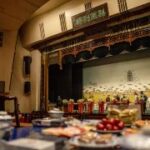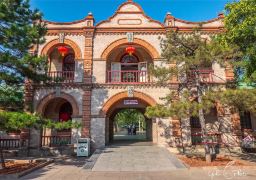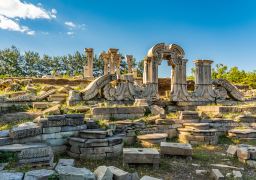Jiaotai Hall is situated between Qianqing Palace and Kunning Palace, with a similar structure to Zhonghe Hall. The term ‘Jiaotai’ is derived from the ‘I Ching’, symbolizing the interaction of heaven and earth, yin and yang, and the upper and lower realms, leading to the smooth flow and nourishment of all things.
Above the central throne, there hangs a plaque inscribed with ‘Wu Wei’, written by Emperor Kangxi of the Qing Dynasty.
In the eastern chamber, there is a copper clepsydra used for timekeeping, which was discontinued after Qianlong’s reign. In the western chamber, there is a self-striking clock, also used for timekeeping, with the entire Forbidden City following ‘Jiaotai Hall Time’. The clock stands approximately 6 meters tall and was manufactured in the third year of the Jiajing era of the Ming Dynasty, making it one of the largest ancient clocks in China.
Emperor Shunzhi of the Qing Dynasty also established an iron plaque here stating ‘No intervention in politics by the harem’. Originally, Jiaotai Hall was where the empress of the main palace received congratulations during major festivals. Since the reign of Emperor Qianlong of the Qing Dynasty, Jiaotai Hall has been used to house the twenty-five imperial seals symbolizing imperial power. Each of the twenty-five seals has a different purpose and serves as the emperor’s seal for exercising power. Normally, the seals are kept in a treasure box covered with yellow silk. Today, the treasure boxes are still displayed in their original positions in Jiaotai Hall. For specific opening hours, please consult the scenic area.









